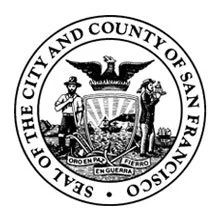Executive Voice & Visibility Strategy
Project Title
Executive Voice & Visibility Strategy
The Context
Across various roles in healthcare, government, social impact, and technology, I have supported C-suite executives in developing their public presence, refining internal communications, and anchoring their leadership within the organization’s values and vision. This has included keynote messaging for TED AI and the UN COP Conferences, media training for government officials, and internal cascading communication strategies that aligned 900+ employees at Blue Shield’s Stellarus spin-off.
At the City and County of San Francisco, I led the development of executive narratives during complex civic events, including coordinating keynote messaging for Barack Obama’s appearance at the Bill Graham Center. At Gridware, I worked closely with the CEO to maintain public trust during regulatory scrutiny, developing a layered narrative architecture that aligned with environmental and cybersecurity priorities.
For senior executives, effective communication constitutes a fundamental leadership imperative. However, during periods of rapid growth, heightened public visibility, or organizational change, many leaders struggle to balance strategic clarity with relational trust. The primary challenge lies in achieving alignment: ensuring that internal messaging supports external positioning and that every public statement, team update, or keynote presentation reflects both intent and integrity.
Frequently, communication is separated from executive development, rather than being recognized as an essential component of leadership. In the absence of a strategic framework, even the most visionary leaders risk misinterpretation or underutilization, thereby generating friction between mission, message, and momentum. It is imperative to integrate communication into the foundational structure of leadership practices, perceptions, and scalability.
The Challenge
The Approach
My approach to executive communications is fundamentally rooted in the understanding that clarity is a vital leadership skill. When applied strategically, narrative has the power to mobilize an organization's culture, shape perceptions, and foster alignment across all levels of the organization.
At the executive level, this entails more than simply drafting talking points; it requires the creation of a comprehensive communication strategy. I collaborate closely with leaders to develop messaging ecosystems that accurately reflect their vision, responsibilities, and impact. From preparing keynote addresses for esteemed platforms such as TED AI and the UN COP Conferences to guiding C-suite executives through critical transitions—such as a Chief Information Officer’s departure or an enterprise-wide restructuring—my work begins with a clear sense of purpose.
I specialize in constructing scalable narrative frameworks that incorporate cascading communication strategies, speechwriting, media training, and stakeholder briefings into cohesive story arcs. Whether coaching a newly appointed executive on effectively conveying their team’s achievements or designing a SharePoint hub to align nearly 900 employees with a developing product strategy, I ensure that every message reinforces core values and business priorities.
Across all engagements, my primary objective is consistent: to empower leaders with the language, demeanor, and systems required to communicate effectively and meaningfully.
The Impact
This executive communications strategy effectively enhances leadership visibility, alignment, and influence across complex environments. At Blue Shield of California’s Stellarus division, integrating the executive voice into platforms like TechTalk and effectively cascading messaging guided over 900 employees through a comprehensive operational shift. This positioned communication as a crucial pillar of cultural and structural transformation.
At Gridware, a tailored thought leadership and federal messaging strategy resulted in a 35% increase in stakeholder trust and a 40% rise in media visibility, which supported the national positioning during critical policy discussions.
Additionally, this approach amplified leaders' presence on global stages, including UN COP Conferences, TED AI events, and executive panels, by helping them convey compelling narratives that resonate with diverse audiences. From high-profile events such as President Obama’s civic appearance to trauma-informed internal messaging for over 3,000 public employees, the impact is evident: well-structured executive communication not only provides updates but also drives outcomes, shapes culture, and builds trust.




